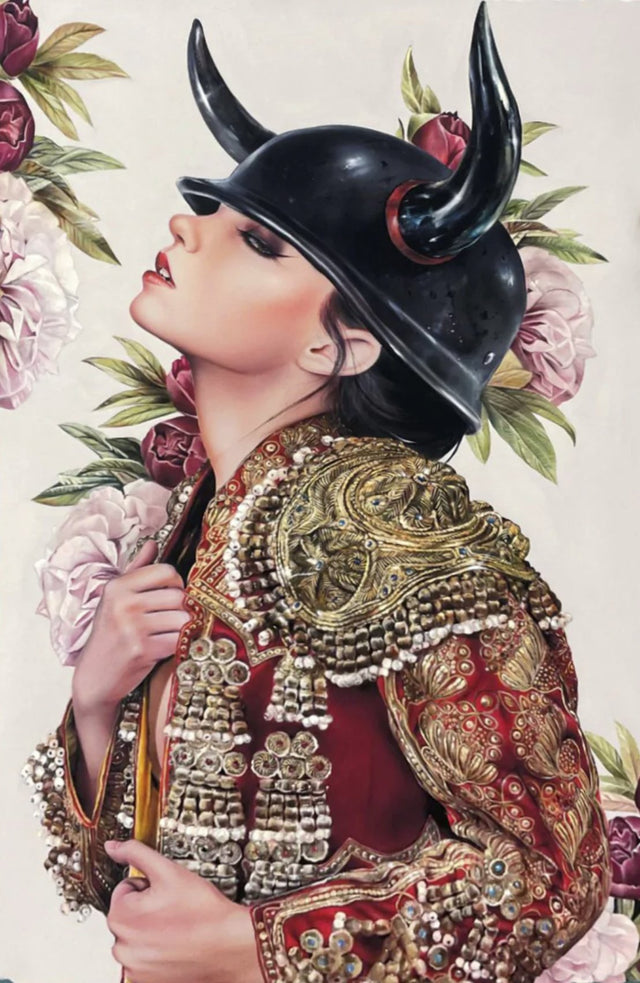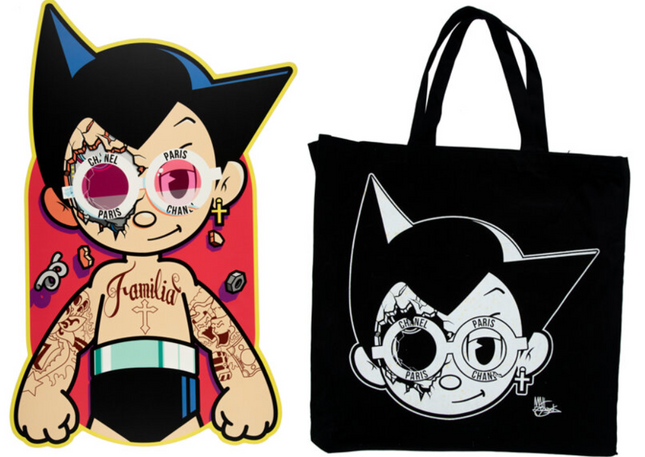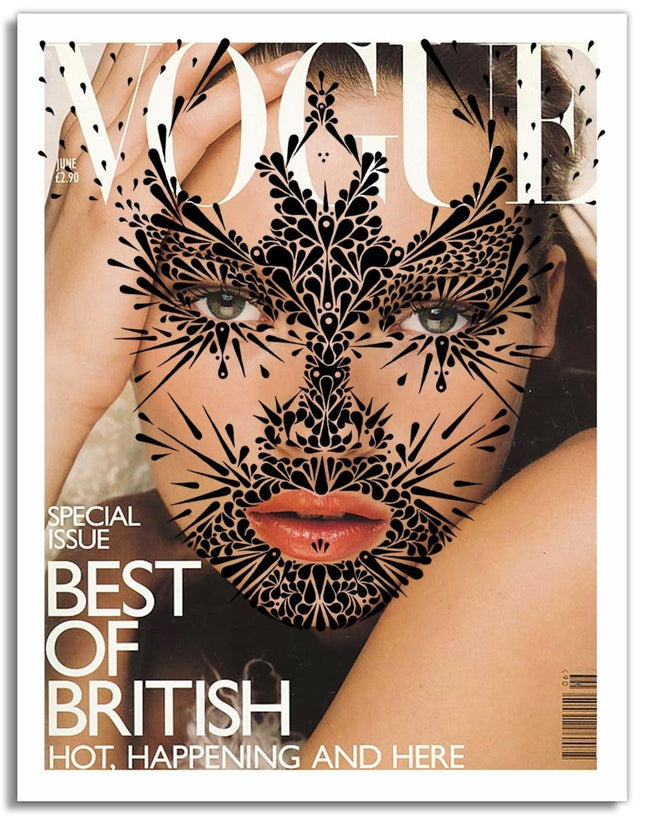
Spanish

Matt Gondek Mighty Vibras Offset Lithograph Print on Wood by J Balvin x Matt Gondek
Mighty Vibras Offset Lithograph Print on Wood Panel by J Balvin x Matt Gondek with Tote Bag Limited Edition Graffiti Street Pop Artwork. 2018 Signed & Numbered Limited Edition of 300 Artwork Size 14x23 Tattooed Up Astro Boy with Chanel Glasses. Bag Has Minor Spot Staining in Upper Area. Artwork Perfect to Near Perfect. J Balvin x Matt Gondek Cultural Synthesis in Street Pop Art The "Mighty Vibras" offset lithograph print on a wood panel is a dynamic fusion of music, street culture, and contemporary art. A collaborative piece by Colombian reggaeton superstar J Balvin and Los Angeles-based artist Matt Gondek, this artwork captures the essence of Street Pop Art and graffiti Artwork. Released in 2018, the limited edition of 300 signed and numbered pieces reflects the global influence of urban art forms and the increasingly porous boundaries between art, music, and fashion. The "Mighty Vibras" piece vividly portrays a tattooed-up Astro Boy, complete with Chanel glasses, a symbol of luxury infused with urban grit. This character, an icon of Japanese manga, is reimagined through the lens of street culture and high fashion, signifying the interconnected nature of global pop culture. Gondek's deconstructive style, known for taking apart characters and piecing them back together, is evident in the artwork's fragmented features, which are visually arresting and thematically resonant. J Balvin's influence on the piece brings a cross-cultural element that is palpable in the artwork's bold colors and the inclusion of the word "Familia" tattooed across the character's chest, a nod to the themes of kinship and belonging that pervade Balvin's music. The size of the artwork, at 14x23 inches, makes it a statement piece that stands out in any setting, from a casual living room to a high-end gallery. Intersection of Art and Merchandise Accompanying the print is a tote bag featuring the same design, highlighting the growing trend of art becoming wearable and usable in daily life. This approach to art merchandise expands the artwork's reach beyond the traditional confines of the art world, allowing it to become a part of the consumer's everyday experience. The tote bag is a mobile canvas, spreading the visual impact of the "Mighty Vibras" artwork to a broader audience. The synthesis of J Balvin's musical heritage and Matt Gondek's artistry in "Mighty Vibras" exemplifies the potential of collaboration across different creative industries. It also illustrates the power of street art to transcend its origins, infiltrating mainstream culture and fashion and becoming an emblem of contemporary lifestyle. "Mighty Vibras" is more than just an artwork; it is a cultural artifact that encapsulates the spirit of the times. It stands as a testament to the creative synergy between J Balvin and Matt Gondek, blending street art's raw energy with pop culture's gloss and, in doing so, creating a new visual language that speaks to a diverse, global audience. The limited edition nature of the piece, along with its associated merchandise, cements its status as a collectible item that holds both artistic and cultural value.
$1,129.00

Stinkfish Vogue Black Silkscreen Print by Stinkfish
Vogue- Black Hand-Pulled Limited Edition Silkscreen Print on Fine Art Paper by Stinkfish Rare Street Art Famous Pop Artwork Artist. 2015 Signed & Numbered Vogue by Stinkfish Screen Print Edition of 60 | Signed by the Artist Size: 18" x 24" City: Bogata, Colombia. The first release was based on a Spanish language magazine Stinkfish had found - the second is based on an English language magazine they had found for him. His lively detailing abstract redefines the glamor and beauty of Kate Moss. Stinkfish and the Evolution of Street Pop Art The Colombian street artist, Stinkfish has carved a unique space for himself in contemporary art. His works, often characterized by vibrant colors and intricate stencils, reflect the dynamic energy of street culture. One of his notable contributions to the art world is a limited edition silkscreen print on fine art paper titled "Vogue," a work that seamlessly blends street art's rawness with pop culture's polished aesthetics. This particular piece from Stinkfish pays homage to the iconography of fashion magazines, explicitly drawing inspiration from a Vogue cover. It's a rare street art piece that elevates the familiar image of a fashion model to a work of famous pop artwork. Created in 2015, this signed and numbered screen print is part of an exclusive series, with only 60 editions made available, each measuring 18" x 24". The art was conceptualized in Bogota, Colombia, and it represents a significant departure from Stinkfish's often more spontaneously created public murals. The Artistic Process Behind Stinkfish's "Vogue" The "Vogue" silkscreen print by Stinkfish is particularly notable for its process and backstory. The inception of the artwork is rooted in the discovery of a Spanish-language magazine that caught the artist's eye. Later, a second iteration was based on an English language magazine provided for him, suggesting a narrative that spans cultures and languages. This cross-cultural journey is central to understanding the piece, reflecting the globalized nature of both street art and fashion. The artwork showcases Stinkfish's signature style, with intricate black patterns overlaying the photograph, transforming the image into something more abstract and lively. The patterns vibrate with life, giving the piece a kinetic energy that redefines the glamour and beauty associated with the fashion model, reportedly Kate Moss. Stinkfish's work disrupts the conventional portrayal of fashion figures, infusing them with a rebellious and celebratory spirit. Impact and Significance of "Vogue" in Street Pop Art "Vogue" is a testament to street pop art's transformative power. Stinkfish's approach to the piece—taking a symbol of high culture and reinterpreting it through the lens of street art—challenges perceptions of value and beauty in the art world. By incorporating elements of graffiti artwork, the print becomes a commentary on the permeable boundaries between high and low culture, between the exclusive elite of fashion and the inclusive, democratic nature of street art. The limited edition nature of "Vogue" also speaks to the changing landscape of art collection. Traditionally, street art is ephemeral, often illegal, and created in the public eye. By transferring his work onto fine art paper and limiting its production, Stinkfish bridges the gap between the fleeting nature of street art and the permanence sought by collectors. This rare edition allows for broader access to his work and elevates the status of street art within the fine art market. Stinkfish's "Vogue": A Cultural Intersection Stinkfish's "Vogue" silkscreen print is much more than a collectible piece of art; it is a cultural artifact that embodies the intersection of diverse artistic worlds. It encapsulates the essence of street pop art and graffiti artwork while respecting the polished world of fashion. This print is not merely a representation of a fashion icon but a redefined image that challenges the viewer to see beyond the surface and appreciate street art's underlying vibrancy and complexity. As such, "Vogue" by Stinkfish is a significant contribution to the discourse on the value and place of street art in contemporary culture.
$209.00



